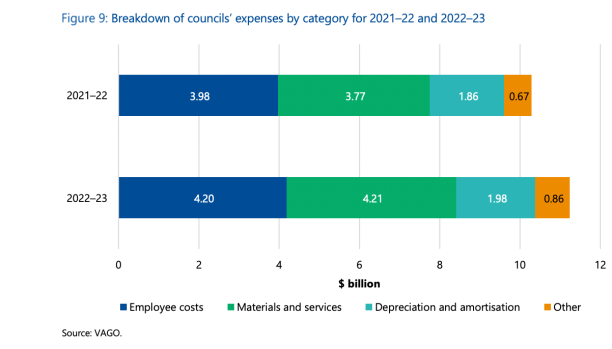
Victorian local governments are continuing to experience a higher staff turnover than before the pandemic, an audit has found, putting this down to competition in the labour market.

Auditor General Andrew Greaves released his summary of audits of the local government sector for 2022-23 last week.
“In 2022–23 the sector continued to experience staff turnover at a rate higher than pre-pandemic levels due to a competitive labour market,” the report says.
It says the sector experienced an average staff turnover of 18 per cent, which is an improvement from 20 per cent in 2021–22, but still higher than 14 per cent in 2018–19.
Small shire councils had an average turnover rate of 22 per cent.
Staff turnover must be managed
Mr Greaves reminds councils that recruiting and retaining appropriately skilled staff is a risk that has to be actively managed to make sure councils meet their legislative reporting requirements.
Staff turnover affects an entity’s ability to prepare financial reports and performance statements and can lead to a loss of corporate knowledge, the report warns.
However the risks can be addressed by ensuring induction programs, mandatory training and refresher training courses embed awareness of governance arrangements, operations and legislative obligations.
Policies, procedures and internal processes also need to be well documented so any new staff are clear about what needs to be done.
Good financial health thanks to FAGs advance
Despite the staff issues, the report found local government balance sheets remain strong, and gives the short term financial health of the sector – which includes 105 agencies and 79 councils – a tick.
However, there are longer term challenges that will need sound financial planning and management to maintain the sector’s current good financial health, which is in part thanks to advances in financial assistance grants.
The sector’s financial performance would have declined had the Australian Government not advanced 100 per cent of the 2023–24 financial assistance grant in 2022–23.
VAGO
“The sector’s financial performance would have declined had the Australian Government not advanced 100 per cent of the 2023–24 financial assistance grant in 2022–23,” the report says.
In 2022–23, Victorian councils generated a combined net surplus of $2.4 billion, which was $70 million, or 3 per cent, more than in 2021–22.
At 30 June 2023, councils’ net assets totalled almost $137.5 billion, a 5.4 per cent increase from 2021–22.
Total expenses grew by 9.3 per cent, outpacing the increase in revenue and income. Councils spent the most on employee costs and materials and services.
Capital expenditure for the sector in 2022–23 was $3.163 billion, which is 26 per cent (or $1.128 billion) less than its budgeted spending.
Government grants were the second highest source of revenue for councils after rates and charges.

Reporting errors
The report found more errors in council reports and statements than the previous year and recommended councils work to improve their reporting processes.
“In 2022–23 we found 180 errors that councils adjusted in their financial reports” the report says.
“This compares to 149 errors in 2021–22. This indicates councils can improve their quality assurance processes when preparing financial reports.”
The audit found a ‘disconnect’ between the finance team and other internal teams and some councils, and identified opportunities for councils to enhance their staff’s understanding of the financial reporting process.
Comment below to have your say on this story.
If you have a news story or tip-off, get in touch at editorial@governmentnews.com.au.
Sign up to the Government News newsletter